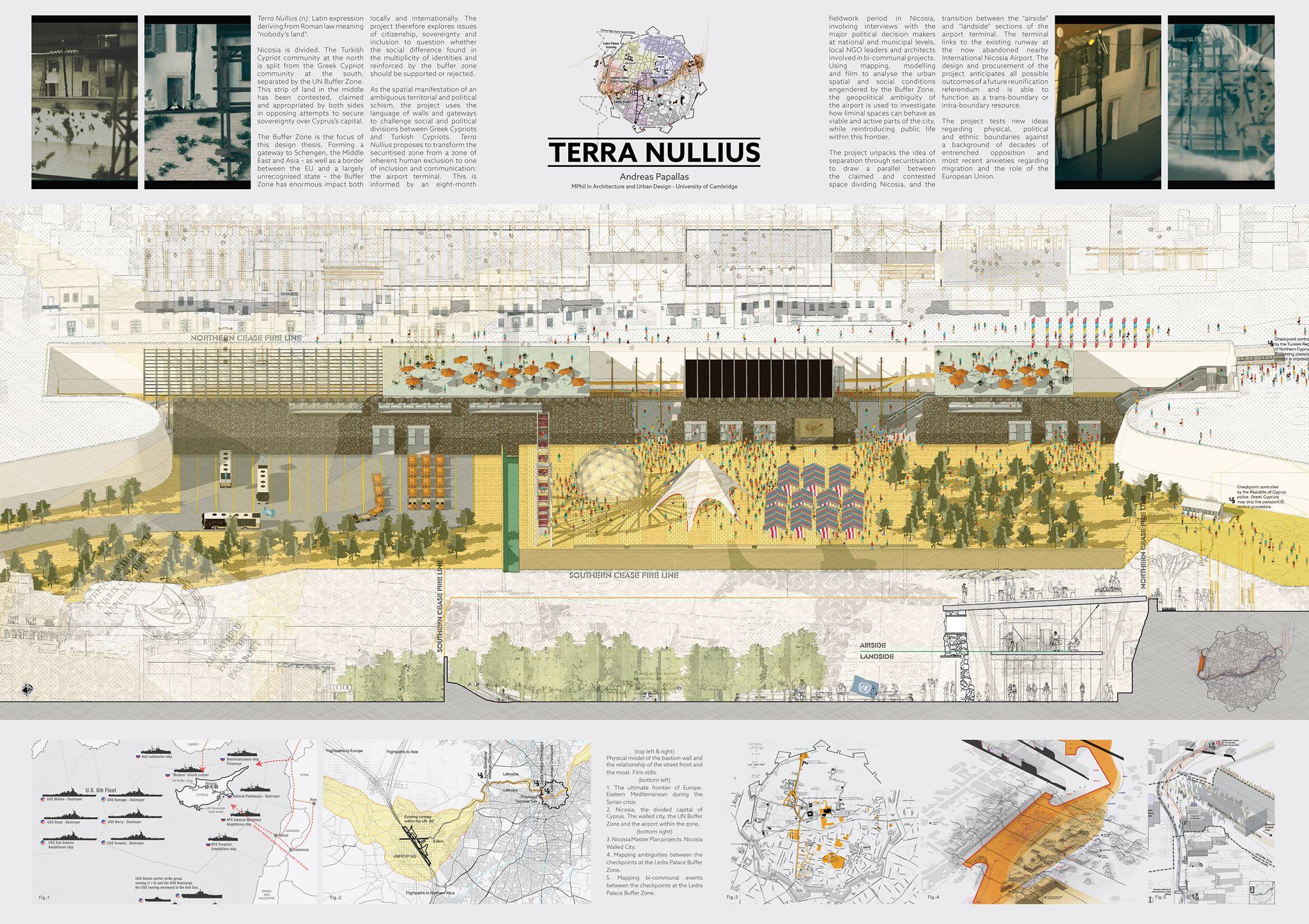
Submitted by M.L. R. Grove on Tue, 12/07/2016 - 10:23
Andreas Papallas project synopsis:
Title: Terra Nullius
Synopsis:
Terra Nullius (n): Latin expression deriving from Roman law meaning “nobody’s land”.
Cyprus is a divided island from end-to-end. The Turkish Cypriot community at the north is split from the Greek Cypriot community at the south, separated by the UN Buffer Zone. This strip of land in the middle has been contested, claimed and appropriated by both sides in opposing attempts to secure sovereignty over Cyprus’s capital.
The Buffer Zone is the focus of this design thesis. Forming a gateway to Schengen, the Middle East and Asia – as well as a border between the EU and a largely unrecognised state – the Buffer Zone has enormous impact both locally and internationally. The project therefore explores issues of citizenship, sovereignty and inclusion to question whether the social difference found in the multiplicity of identities and reinforced by the buffer zone should be supported or rejected.
As the spatial manifestation of an ambiguous territorial and political schism, the project uses the language of walls and gateways to challenge social and political divisions between Greek Cypriots and Turkish Cypriots. Terra Nullius proposes to transform the securitised zone from a zone of inherent human exclusion to one of inclusion and communication: the airport terminal. This is informed by an eight-month fieldwork period in Nicosia, involving interviews with the major political decision makers at national and municipal levels, local NGO leaders and architects involved in bi-communal projects. Using mapping, modelling and film to analyse the urban spatial and social conditions engendered by the Buffer Zone, the geopolitical ambiguity of the airport is used to investigate how liminal spaces can behave as viable and active parts of the city, while reintroducing public life within this frontier.
The project unpacks the idea of separation through securitisation to draw a parallel between the claimed and contested space dividing Nicosia, and the transition between the “airside” and “landside” sections of the airport terminal. The terminal links to the existing runway at the now abandoned nearby Nicosia International Airport. The design and procurement of the project anticipates all possible outcomes of a future reunification referendum and is able to function as a trans-boundary or intra-boundary resource. Finally, the project tests new ideas regarding physical, political and ethnic boundaries against a background of decades of entrenched opposition and most recent anxieties regarding migration and the role of the European Union.
The winner will be announced following the final in London on Thursday 21st July.
Click here for more information.
